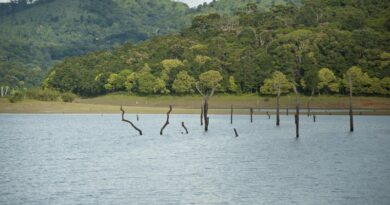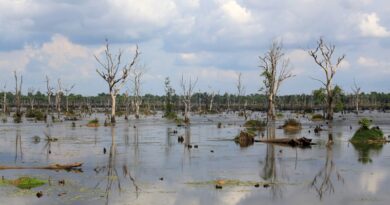Number of rural households with tap water connections growing: Survey

The number of rural households having fully functional tap water connections within their premises has been growing over the past several months – the number has risen to 62 per cent of rural households, according to a survey commissioned by the Union Jal SHakti Ministry.
The survey conducted to assess the functioning of the Centre’s ambitious Jal Jeevan Mission (JJM) had reported 52 per cent rural households as having tap water connections in June this year.
The survey said Tamil Nadu, Himachal Pradesh, Goa and Puducherry had more than 80 per cent of households as having fully functional connections while less than half the households in Rajasthan, Kerala, Manipur, Tripura, Maharashtra, Madhya Pradesh, Mizoram and Sikkim had such connections.
The survey also pointed out that early -fourths of households received water all seven days a week and just eight per cent of the households received water once a week. On average, households got water for three hours every day while 80 per cent reported that their daily requirements of water were being met by the tap connections.
On an all-India basis, 59 per cent households reported that they receive water at least once a day from piped water supply, with average duration of three hours in a day.
Maharashtra, Karnataka, Andaman & Nicobar Islands, and Mizoram had over 90 per cent households receiving water at least once a day while Puducherry, Tripura, Bihar, West Bengal, Telangana and Punjab received water at least once a day per week in more than 90 per cent households.
A fully functional tap water connection is defined as a household getting at least 55 litres of per capita per day (lpcd) of potable water all through the year.
Punjab, Tripura, Bihar, Goa, Kerala, West Bengal, Arunachal Pradesh and Puducherry were providing more than 55 lpcd water in more than 95 per cent households.
The survey of tap water connections across the country was conducted by HTA-Kantar Public. A sample survey that spanned 33 states and Union Territories across 712 districts, 13,299 villages and 3,01,389 households was conducted by the private agency.
Under the Jal Jeevan Mission, the Centre aims to provide safe and adequate drinking water through individual household tap connections by 2024 to all households in rural India.
Some states like Goa, Telangana and Haryana have already achieved 100 per cent tap connectivity to all households as also UTs like Puducherry, Andaman & Nicobar Islands, Dadra & Nagar Haveli and Daman & Diu.
The survey also looked at the water quality and found that 95 per cent of households had quality within acceptable limits of pH values. The survey collected water samples from 2,59,151 households and 16,148 public institutions. These samples were sent to district-level NABL accredited laboratories for testing of water quality.
Only 83 per cent of the submitted samples were analysed for purity and it was found that of these, as many as 93 per cent were found to be free of bacteriological contamination.
But, the survey raises concern on the problem of chlorine contamination. Most of the anganwadi centres and schools were found to have higher than the permissible range of residual chlorine and indicated inappropriate local dosing, the survey found, underlining a need to monitor the correct dosing of chlorine in the pipe water supply system.
Overall, 89 per cent anganwadi centres were found to have potable water supply. Sikkim, Ladakh, Dadra & Nagar Haveli and Daman & Diu and Andaman & Nicobar Islands reported receiving potable water in 100 per cent of anganwadi centres, while Tripura and Kerala received potable water supply in 80 per
cent of such centres.
More than 90 per cent of the village-level institutions were found to receive potable water in the survey.


